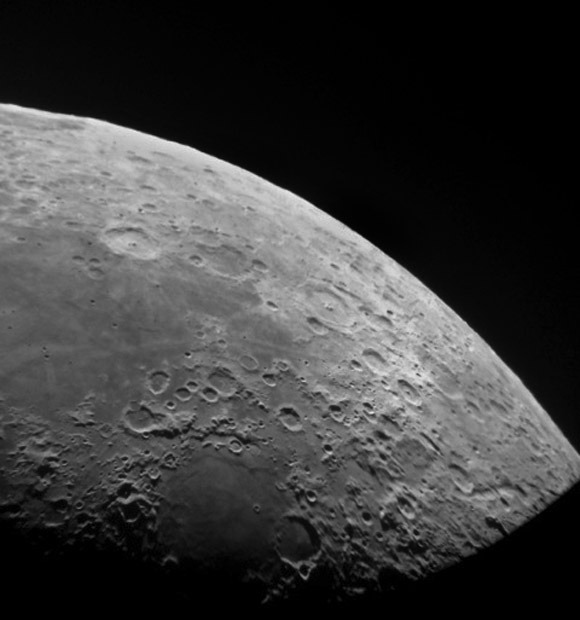August 5, 2024
A Snapshot Tour
Originally published April 19, 2014

east up image by Makayla Wheeler, Florida
I like this image for a number of reasons. First, it was taken by a high school student who identifies herself as an astro-photographer living on the Space Coast of Florida. Second, it was a simple snapshot, made by holding an iPhone to the eyepiece of a planetarium telescope. Third, it shows a lot of interesting lunar features. Starting at Nectaris, there are a number of details that mark the concentric and radial structures of the basin. The offset of the mare surface is hinted at where a basin ring crosses the crater Fracastorius, and outer rings are indicated by hilly ridges both to the upper right and far left of Mare Nectaris. The twin rays of the Messier pair are well shown, as is the curved isosceles ray perpendicular to the twin rays. The giant trough is just visible connecting the west wall and central peaks of Petavius, and the zone of avoidance for the rays of nearby Petavius B show that the crater-forming projectile came from the north/left. The small headlight craters south of Petavius brighten that area. Finally, parts of the limb-straddling maria Smythii and Australe are at the limb ends of the image.
Chuck Wood
Technical Details
This picture was taken on April 4, 2014 at the Eastern Florida State College Planetarium and Observatory with my iPhone 5s. I took a picture with my iPhone through their 24 inch Ritchey-Chretien telescope. This telescope is the largest in Florida open to the public on a regular basis. To me, this picture looks as if someone is shooting the Moon out of a space ship window. The camera settings were: Lens: 4.1 mm, exposure: 1/30, aperture: f/2, ISO: 40.
Related Links
21st Century Atlas charts 3, 4, 6, & 7.
Yesterday's LPOD: Italian Masterpieces
Tomorrow's LPOD: Unrolled
COMMENTS?
Register, Log in, and join in the comments.



